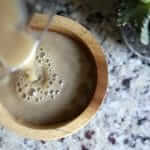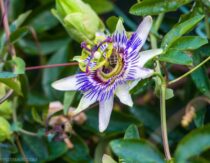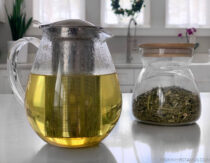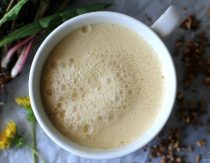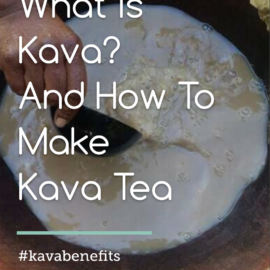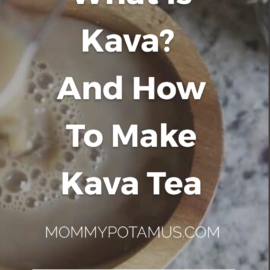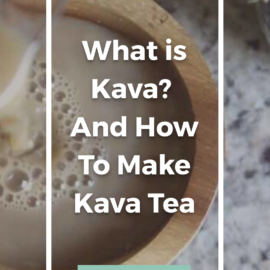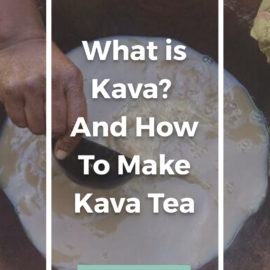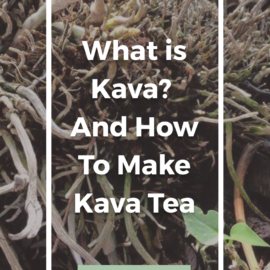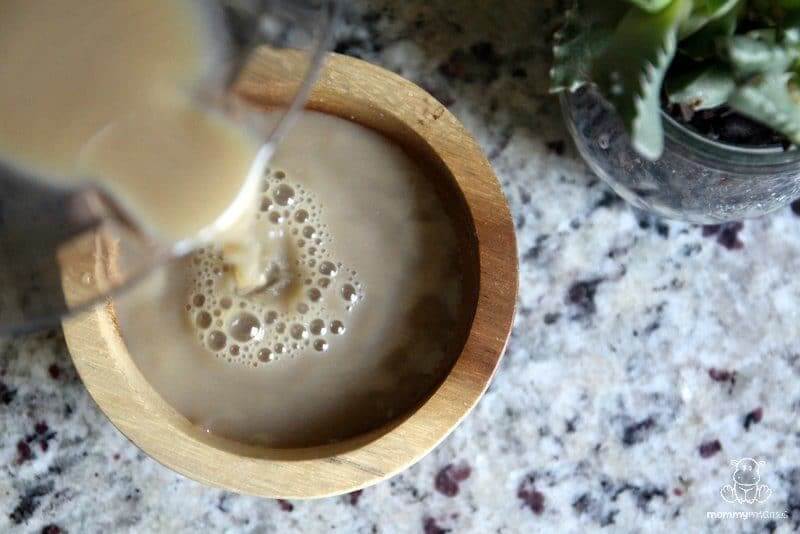
When NFL player Matthew Masifilo was prescribed Vicodin for a torn MCL during his Stanford days, he opted out. “I wouldn’t take it,” he told ESPN. “I always reacted badly to it. So I stuck with the old ways.” (1)
At the center of those “old ways” is kava root, which is used both socially and therapeutically in Polynesian culture. It’s typically consumed for its relaxing, stress-relieving effect, but Masafilo also found it helpful for muscle and ligament discomfort. He shared this “old way” with other players, and that year the New England Patriots owner Bob Kraft:
counted 18 players drinking kava in the locker room after a late-season practice. That team included two prominent players of Polynesian descent, tight end Michael Hoomanawanui and defensive lineman Sealver Siliga. Kraft credited the kava gatherings with helping to build unity on a team that went on to win Super Bowl XLIX.” (1)
It has a long history of traditional use for stress-relief, deep sleep and neuromuscular relaxation, and has also become the focus of several clinical research studies. However, there are safety considerations that are important to be aware of. We’ll dive into those below, plus how to make kava tea, but first you might be wondering:
What is kava? ^
Kava (Piper Methysticum) is a member of the pepper family that grows in the South Pacific Islands.
Sometimes called kava kava or kawa kawa, it
has the unique ability to relax the body while awakening the mind. It produces a sense of relaxation and at the same time heightened awareness . . . It helps reduce tension, anxiety, and stress. Its analgesic properties help alleviate pain.” (2)
Cultivated in Hawaii, Micronesia, Fiji, Vanuatu, the Samoas, and Tonga, it’s traditionally consumed as a drink, which is made by pounding the peeled root into a powder, mixing it with lukewarm water, and then straining it into a coconut shell that’s used as a cup.
Important note: As you’ve probably noticed in my natural remedies section, I usually focus on herbs that earn a Safety Class 1A rating in the Botanical Safety Handbook – the safest rating possible. Kava has a more controversial safety profile and for that reason I almost didn’t write about it, but because it is becoming increasingly popular – with kava bars opening up all around the U.S. – I wanted to share what I’ve learned.
As always, I want to mention that none of these statements have been evaluated by the FDA, this article is not medical advice, and it is not meant to diagnose or treat any condition. Please talk with your healthcare provider about any herbal supplements you are considering. Now that we’ve got that out of the way, let’s take a look at the benefits.
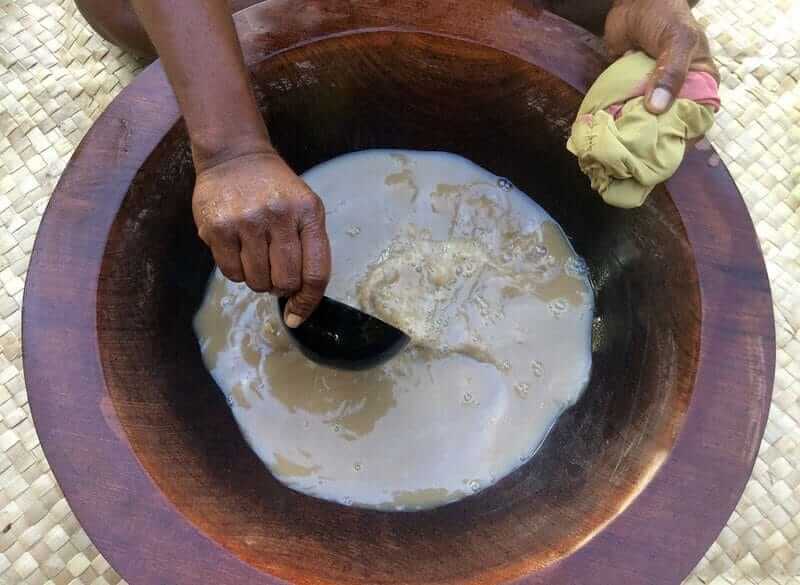
Kava Benefits ^
Like coffee, kava is considered by many to be a nootropic – a substance that benefits cognitive function and has neuroprotective properties. (3)
Unlike coffee, it’s not a stimulant and is considered to be non-addictive. Its effect is often described as creating a sense of happiness or well-being (similar to coffee and alcohol in small amounts) paired with deep relaxation and clarity of mind.
The main active constituents in kava are kavalactones, which are:
- Relaxing and stress-relieving (probably because kavalactones influence two neurotransmitters, GABA and serotonin)
- Mood enhancing
- Helpful for sleep
- Analgesic
- Neuroprotective
- Helpful for easing neuromuscular tension (4) (5) (6)
Dr. Xiaolin Zi, a UC Irvine associate professor of urology, is also investigating “a seemingly paradoxical fact: South Pacific islanders enjoy low cancer rates despite being heavy smokers.”
“Cigarette smoking is a leading cause of bladder cancer, but in the Pacific islands, where kava is plentiful, the incidence of cancer is low despite high smoking rates,” he told University of California Irvine News, adding that he’s researching a particular component called flavokawain A. (7) More research is needed to establish whether or not there is a connection.
What does kava taste like? ^
The name “kava” comes from the Tongan word “awa,” which means bitter. My opinion after my first sip? This stuff definitely does something because no one would drink it otherwise. Most people sweeten it with a little honey or maple syrup, and sometimes with ginger powder or pineapple juice.
“Don’t be alarmed the first time you try it;” writes Rosemary Gladstar, “it will numb the tongue and create a tingling sensation throughout the mouth. These sensations are temporary and are caused by kava’s active chemical compounds, called kavalactones.” (2)
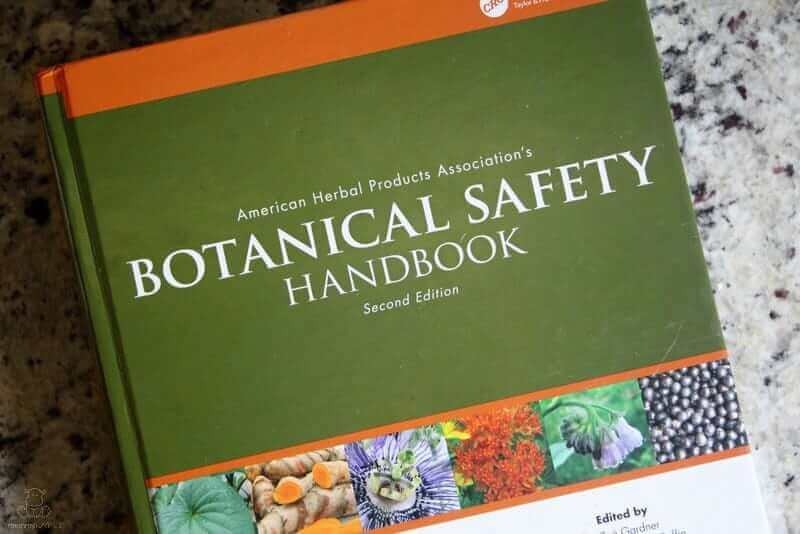
Is kava safe? ^
The Botanical Safety Handbook (2nd Edition) classifies kava as a Safety Class 2b/c herb. It is not recommended for use during pregnancy and breastfeeding except under the supervision of a qualified healthcare practitioner and does interact with other medications and herbs.
The controversy around kava’s safety goes back to case studies in the late 1990’s which indicated that kava may cause liver toxicity. The reported effects were serious – including liver damage, liver failure requiring a transplant, and even loss of life. However, those reports seemed to conflict with the experience of Pacific Islanders.
Kava has been used in the Pacific Islands where it is grown for centuries without evidence of liver problems,” researcher Jerome Sarris, of Australia’s University of Queensland told WebMD. “But they only use water-soluble extract and they only use the peeled root of the plant.” (8)
How can a root that has long history of use without known side-effects suddenly produce those outcomes?
A lot of effort has been put into answering that question both by governments (including some who initially banned or restricted kava without doing an independent analysis, then reversed the bans/restrictions after doing their own safety evaluations) and scientists from around the world. Here are the factors they’ve proposed:
Different Extraction Methods
According to a report issued by the government of New Zealand, in all the reported cases of liver problems “the kava had been prepared as a concentrated ethanol or acetone extract” rather than the water extract traditionally used in the Pacific Islands. (9)
As I explained in this post on making adrenal support tea, while water extraction methods draw out many of the nutrients found in herbs – flavonoids, vitamins, and minerals, for example – there are some that are left behind. Alcohol-based extracts draw out some (but not all) of the same compounds, plus different ones such as alkaloids.
In essence, the thought here is that alcohol/ethanol-based extracts are different in chemical composition than the water extracts that have been traditionally used in the Pacific Islands. According to the World Health Organization, kava extracts made from alcohol/ethanol are “not chemically equivalent” to water extracts. (10)
The type of extract used may also be significant because “water extracts of kava contain glutathione, a potent antioxidant that helps prevent liver toxicity. Commercial preparations [tinctures] don’t contain glutathione, which might increase the risk of liver problems.” (11)
Parts of Plant Used
Kava’s popularity was quickly rising around the time of the initial adverse reports. It’s a slow-growing plant, so as demand rose it became difficult to harvest enough kava root to meet it. It is reported that some supplement companies began stretching their supply by incorporating the stem and leaves, which contain an alkaloid, pipermethystine, that is toxic to the liver.
Traditional kava producers never incorporate leaves and stems into their kava drinks, just like my husband’s grandmother never incorporated rhubarb leaves (which are highly toxic) into her famous rhubarb pie.
Other Substances Involved
In most of the cases reported, kava was taken with another substance like alcohol or a drug (prescription or otherwise) that can cause stress on the liver. According to the World Health Organization, kava should not be taken with alcohol or drugs due to the potential for interactions. (10)
Genetic Mutation
Some people have a genetic deficiency in cytochrome P450 enzymes, which are needed to metabolize many medications and herbs. Individuals with this polymorphism may have an increased risk of adverse reactions to a variety of medications and herbs including kava.
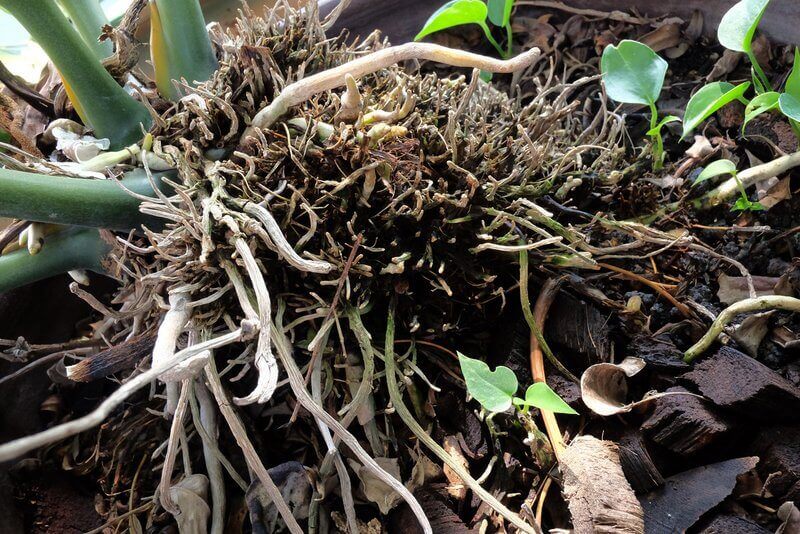
What do experts say about kava safety? ^
In 2007, WHO released a report which concluded that:
Toxicological and clinical studies vary in their results addressing kava hepatotoxicity, but experimental studies and clinical trials suggest that water extracts are devoid of toxic effects on the liver.” (10, emphasis mine)
They did, however, recommend that kava be available only through a prescription in order to better monitor its use.
According to leading kava expert Dr. Vincent Lebot, who has published over 15 peer-reviewed papers found in PubMed and is cited as an authoritative source in this report created by the United Nations and World Health Organization, “drinking kava is no different than drinking coffee. ‘If you abuse coffee, you might have side effects [too].'”
However, he clarifies that his statement only applies to the traditionally prepared beverage. “Anything else – extracts, pills, capsules, alcoholic solutions, you name it – should not be considered kava, he warns. ‘If you put caffeine in a pill, you cannot call it coffee, just like dried raisins in a capsule are not wine.'” (12)
In 2007, the Association of American Family Physicians gave kava an “A” ranking (indicating that there was strong evidence to support its use) for short term periods up to 24 weeks. (13)
Other Thoughts ^
In 2014, the Food and Agriculture Organization of the United Nations partnered with the World Health Organization to create a report on the safety of kava. They note that in over 20 years of monitoring the health of Aboriginal people in northern Australia (where it was introduced intentionally as an alternative to alcohol), they have not been able to document one case of liver failure caused by kava “despite clear evidence of excessive consumption.”
At very high doses (about 3500-6440 mg kavalactones/day) over the course of years and sometimes decades, the most common side effects were a scaly rash, weight loss, decreased sex drive and elevated GGT levels (which can be an early indication of cholestasis, a reduction in bile flow). All side effects reversed after discontinuing kava. (14)
My point in mentioning this is not to say whether anyone should or should not consume kava, but to point out that many substances have a therapeutic dosage range that must be respected.
For example, wine consumption is common in Blue Zones (places with the highest percentage of people living to 100), and research shows that in small amounts it may have some benefits, including helping to keep the brain “clean.” Large amounts, on the other hand, can cause serious health problems.
In a similar vein, Tylenol is considered relatively safe by most people, but is the most common cause of liver failure in the United States. (15)
As I mentioned before, I prefer to focus on the safest class of herbs possible, but there is a lot of compelling research (here and here for example) that kava may be helpful for a variety of complaints, and in some circumstances may a safer therapeutic option than conventional approaches. Here’s an example of that perspective written by a physician.
Kava Safety Guidelines ^
Although I have not been able to find one comprehensive list of safety recommendations, below is a consolidated list of what I have compiled from several sources including the World Health Organization, Science Daily, and the American Botanical Council. You’ll find direct links to their recommendations in the notes section below – I recommend reviewing at least one of them in full.
- Contraindicated Conditions: “Kava should not be used in patients with liver disease or a history of such, or in patients who take excessive alcohol.” (10) It is not recommended to consume kava at the same time as alcohol. Individuals with Parkinson’s are also advised to avoid kava.
- Drug Interactions: “Warnings should be made available about the extensive risk of interactions with other drugs or herbal preparations. In particular, kava should not be used with antipsychotics, other anxiolytics or antithrombotics because of the risk of interactions which could include effects on the liver.” (10) Drug interactions with benzodiazepines and anti-depressants are also documented.
- Variety Used: A specific variety – noble kava – is preferred because it is traditionally considered safe. (16) The kava should be organically cultivated and at least three years old, because that’s the minimum age for suitable kavalactone content. Know which parts of the plant your are buying: roots or stumps (chips), the former being richer in active ingredients.
- Part of Plant Used: Use only the peeled root of the Kava plant (not leaves or aerial parts) and only a water-soluble extract (not alcohol or chemical solution to extract constituents) (16)
- Discontinue Use If: Stop taking kava immediately if symptoms of jaundice (e.g., dark urine, yellowing of the eyes) occur. (17)
- Talk With Your Healthcare Provider: Consult your primary healthcare provider prior to kava use especially if you suspect liver problems before taking kava. (17)
- Children should not use kava
Regarding dosage, The American Herbal Products Association’s Kava Committee recommends a maximum of 300 mg of kavalactones (the primary constituent in kava) per day.
Do I drink kava? ^
Queen Elizabeth has been drinking kava during visits to the South Pacific since at least 1953. However, after slogging through every U.N. and World Health Organization report I could find, plus an analysis from the Food Standards Agency of Australia & New Zealand (their version of the FDA) and many other sources, I still had questions.
As I read, one name kept coming up as the person to talk to about kava and safety. Dr. Vincent Lebot, whom as I mentioned earlier has published over 15 peer-reviewed papers found in PubMed and is cited as an authoritative source in this report created by the United Nations and World Health Organization, is a geneticist and plant breeder studying the improvement of tropical root crops.
He’s also a scientist at the Department of Agriculture in Vanuatu, which is an island that grows kava. Dr. Lebot graciously agreed to answer some questions for me, and I wanted to pass along what he had to say.
Safety Recommendations: He agreed with the safety recommendations listed above.
Dosage: I asked him if he agreed with the American Herbal Products Association’s Kava Committee’s recommendation of a maximum of 300 mg of kavalactones per day. He replied, “yes it is ok if you want a relaxing effect but it is really per session or per evening rather than per day, you always drink kava on an empty stomach and before dinner in the evenings,” adding that “300 mg is a very safe recommendation, in the South Pacific we drink more than that without apparent side effects.”
Alcohol & Kava: Perhaps my biggest question was, “Can alcohol and kava be safely consumed by the same person at separate times?” His reply was yes, and that kava and alcohol can even be consumed on the same day if spaced apart and the alcohol is lighter (like beer or wine) and moderation is used.
“For example,” he wrote, “if you drink the equivalent of three small cups of kava (say 300 ml) and relax and then, an hour or so later, you have a beer or two before diner [sic – Dr. Lebot’s first language is French] and going to bed, this is not going to do any harm. Many kava drinkers (including myself) do it once or twice a week.”
What I Decided: After researching, I felt comfortable trying kava, but because I’m cautious I chose not to consume it on the same day as I consume wine. I first tried kava in place of my occasional glass of wine in the evening – a couple of hours after dinner – and did not notice any effect.
Because it’s best consumed on an empty stomach, I decided to try again, this time making some about an hour before dinner. I gulped it down – this is not the sort of drink that is sipped for enjoyment – and very soon after began feeling pleasantly relaxed and calm, like I’d been at the beach all afternoon.

How To Make Kava Tea ^
Kalm With Kava sells lab-tested, independently certified noble kava from the Dept. of Agriculture in Vanuatu. They’re also members of the American Herbal Products Association, which produces the Botanical Safety Handbook – a trusted source for evidence-based herbal information.
I purchased their Premium Borongoru kava because – after talking with the owner – I was able to determine that about 4 tablespoons equals 300 mg of kavalactones (the recommended max) when made using the methods below.
The traditional method includes 5-10 minutes of steeping followed by 5-10 minutes of kneading, but you can get the same result using these simplified instructions from Kalm With Kava.
Add 2-4 Tablespoons of Kava for each serving you plan to prepare and 8-12oz. of water (As hot as your tap gets extracts the most active ingredients, usually around 120 degrees – not boiling though as temperatures over 140 degrees can cause the kava to congeal and become difficult to strain) to a standard blender. Blend on high for approximately 4 minutes, empty and strain this through a cloth strainer. Chill and Enjoy!”
Notes: First, I would use purified water instead of tap water. Also, I don’t heat the water because my Vitamix is so powerful that just blending it for 4 minutes on high heats it up significantly.
Kava Tea Recipe ^
Equipment
- Muslin nut milk bag or mesh strainer lined with tightly woven cheesecloth (if loosely woven use a few layers)
Ingredients
- 2-4 tbsp ground kava root
- 8-12 oz. water
Instructions
- Heat water to about 120F, but don't let it boil because it can make the liquid congeal and become difficult to strain.
- Add water and kava root to a regular blender and blend on high for 4 minutes. If you're using a high-speed blender, skip step number one. High-speed blenders are so powerful that they will heat up the water significantly as they work.
- Pour the liquid through a muslin nut milk bag or mesh strainer that has been lined with cheesecloth, then drink up.
Want more research-backed natural remedies? ^
No problem, I’ve created a free ebook for you – Kitchen Apothecary: 25+ Natural Remedies Using Ingredients From Your Pantry – as a gift for signing up for my newsletter. You’ll also get updates when I post about safe essential oils for pregnant/breastfeeding mamas, exclusive gifts and coupons (I was able to give away a jar of free coconut oil to anyone who wanted it recently!), plus other goodies.
Sign up using the form below.
This article was medically reviewed by Dr. Scott Soerries, MD, Family Physician and Medical Director of SteadyMD. As always, this is not personal medical advice and we recommend that you talk with your doctor.
Have you ever tried kava? ^
What was your experience?
Sources for this article:
1. Siefert, Kevin. (2017, Nov) Kava: The NFL’s newest and safest painkiller
2. Gladstar, Rosemary. (2008) Rosemary Gladstar’s Herbal Recipes For Vibrant Health.
3. Kalm With Kava. Is Kava a Nootropic?
4. Dinh, Long Doan. (2001) Interaction of Various Piper methysticum Cultivars with CNS Receptors in vitro
5. Tzeng, Yew-Min. (2015, June) Neuroprotective properties of kavalactones
6. Romm, Aviva. (2014) Botanical Medicine For Women’s Health, First Edition.
7. UCI News (2014) Can kava cure cancer?
8. Boyles, Salynn. (2009, May) Kava for Anxiety: Is Short-Term Use Safe?
9. Food Standards Australia New Zealand (2004, June) Kava: A Human Health Risk Assessment.
10. World Health Organization. (2007) Assessment of the Risk of Hepatotoxicity With Kava Products.
11. Castleman, Michael. (2008) Kava Safety Update.
12. Scaccia, Annamarya. (2018, March) Kava: Inside the All-Natural High That’s Sweeping America.
13. Saeed, Atezaz (2007) Herbal and Dietary Supplements for Treatment of Anxiety Disorders.
14. Food and Agriculture Organization of the United Nations (2016) Kava: A Review of the Safety of Traditional and Recreational Beverage Consumption. Technical Report
15. Mayo Clinic. Acute Liver Failure.
16. Science Daily (2011) Experts propose global guidelines for safe use of Kava.
17. American Botanical Council (2011) American Botanical Council Announces New Safety Information on Kava.
18. Lake MD, James (2017) Kava Is an Effective and Safe Treatment of Anxiety.

